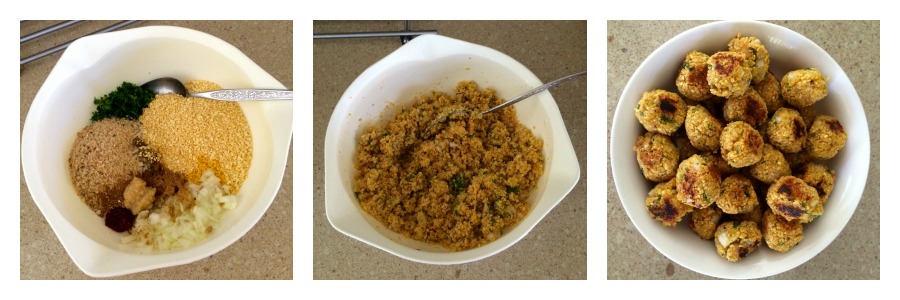Product Snapshot: Lupin Foods' Lupin Flakes
Written by
on Wednesday, 17 December 2014.
Tagged: Product snapshot, review

Move over quinoa, there’s a new kid on the block - lupin. It’s nutritional scorecard shines, with this new lupin flake boasting claims of an “excellent source of fibre” and a “good source of protein”, even more so than other legumes and grains. But how can we actually use flaked lupin? And does it taste good enough to be the next super food?
Scientists developed this sweet, Australian legume as an alternative to the more bitter European lupin way back in the 1960s. Now it is a significant crop grown in Western Australia. The flakes are small and hard (rather than thin and light), with a distinctive yellow colour and a mild fibrous smell, but nothing too off-putting.
How do you use it?
W would recommend using it:
- as you would chickpeas in falafels or ‘hummus’
- as breadcrumbs for crumbing meat or vegetables
- as you would lentils in quick curries
- blending it with flour for use in baked products (such as breads, cakes and slices) or
- cooking it up as pasta.
So how did it fare?
I had a go at the falafel recipe. It was quick to make, had a lovely flavour and a similar texture to the traditional chickpea version, though the recipe needed a bit more liquid. I’m interested to see how they’ll go in sweet foods though with their mild flavour, I’d imagine the only discernible difference would be texture. You could probably overcome the slightly coarser texture by processing it into a finer powder first, and then simply substituting for some of the flour.

Pros
- High in fibre - in fact more than most other legumes (53% more than chickpeas) and grains (81% more than quinoa).
- Surprisingly low in carbohydrates (only 4%) and high in protein (40%), which means that, nutritionally, it resembles a nut (except for its low-fat content).
- Could be a good plant-based protein source for vegetarians and vegans.
- Gluten-free, as lupin is a legume, not a grain, and so is suitable for those with Coeliac Disease or gluten intolerance.
- Quick and versatile to use, acting as both a legume and grain substitute in recipes.
- Has a mild taste that means the flakes take on the flavours you cook them with.
- They have only one ingredient lupin and it comes in a handy resealable bag.
- Australian grown, so good news for our farmers which means it has low food miles (unlike quinoa).
- Low in sodium (salt) at 42 mg per 100 g though not as low as chickpeas (24 mg), yellow split peas (7 mg) and quinoa (5 mg).
Cons
- This new product requires a bit of playing around with in the kitchen to figure out the best ways to cook with it, and my experience with the Lupin Foods recipes is that they need a little adjusting to get them right.
- Not as easy to use as a can of chickpeas or lentils, especially in things like hummus and curries, though quicker than soaking and cooking dried legumes.
- It’s so high in fibre that you’ll want to be careful not to overdo it so you don’t cause stomach upsets initially.
- Unfortunately, unless you live in Western Australia where Lupin Flakes are sold at several independent supermarkets, you’ll have to order it online.
How do Lupin Flakes compare to other legumes and grains?
| Per 100 g |
Kilojoules |
Protein (g) |
Carbs (g) |
Fibre (g) |
| Lupin Flakes | 1350 | 40 | 4 | 37 |
| Chickpeas (dried uncooked) | 1530 | 19 | 43 | 17 |
| Yellow Split Peas (dried uncooked) | 1320 | 23 | 45 | 10 |
| Quinoa (dried uncooked) | 1540 | 14 | 57 | 7 |
Source: Lupin Flakes pack plus http://www.mckenziesfoods.com.au/
Nutrition stats for lupin flakes
| Nutrient |
Per serve (40 g which is approx 2 tbsp) | Per 100 g |
| Energy kJ | 540 | 1350 |
| Protein g | 16 | 40 |
| Fat - total g | 2.6 | 6.4 |
| - saturated g | 0.4 | 1.1 |
| Carbohydrates - total g | 1.6 | 4.0 |
| - sugars g | 1.0 | 2.5 |
| Dietary Fibre g | 14.8 | 37 |
| Sodium mg | 16.8 | 42 |
Source: Lupin Flakes pack
The bottom line
As a keen foodie and amateur cook, I look forward to experimenting more with these Lupin Flakes as I think they hold real nutritional promise. They might be especially good as a new protein source for vegetarians and vegans or to blend into baked goods for a fibre boost without the bran-y taste. However, you’ll have to be as keen as I am to put in the kitchen time to really get all the benefits!
3 things you need to know about lupins
- There are two types of lupins – sweet and bitter. Bitter contain high levels of alkaloids and are poisonous and sweet have much reduced alkaloid levels and are safe to eat.
- Lupins have the same allergy profile as soy beans but are less problematic than peanuts.
- Lupins usually require soaking and boiling – much like chickpeas. (http://www.glnc.org.au/legumes/types-of-legumes/lupin/)
Guest post by Megan Cameron-Lee (BND), APD
Jemma O'Hanlon
The Good Stuff
The Boring Stuff
© 2025 Foodwatch Australia. All rights reserved
Website by Joomstore eCommerce





